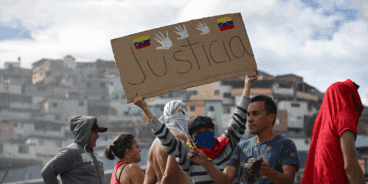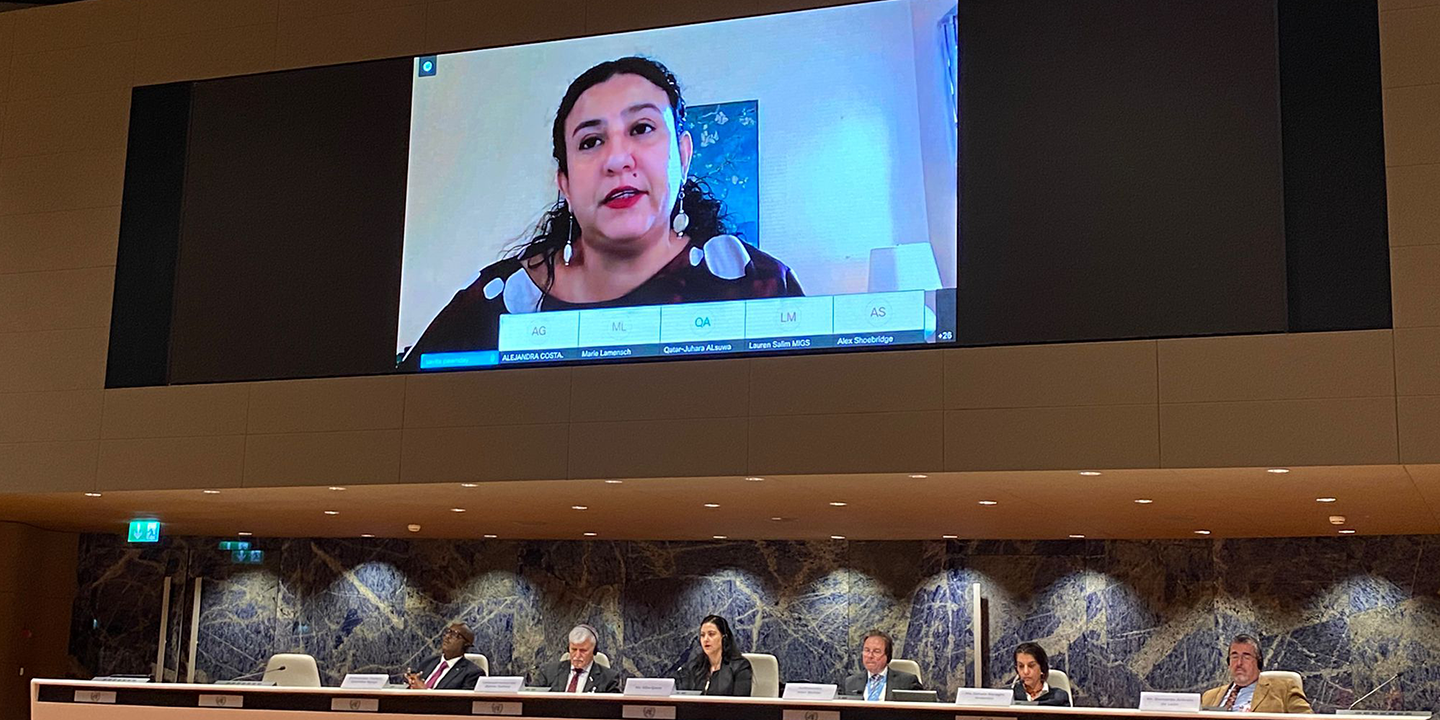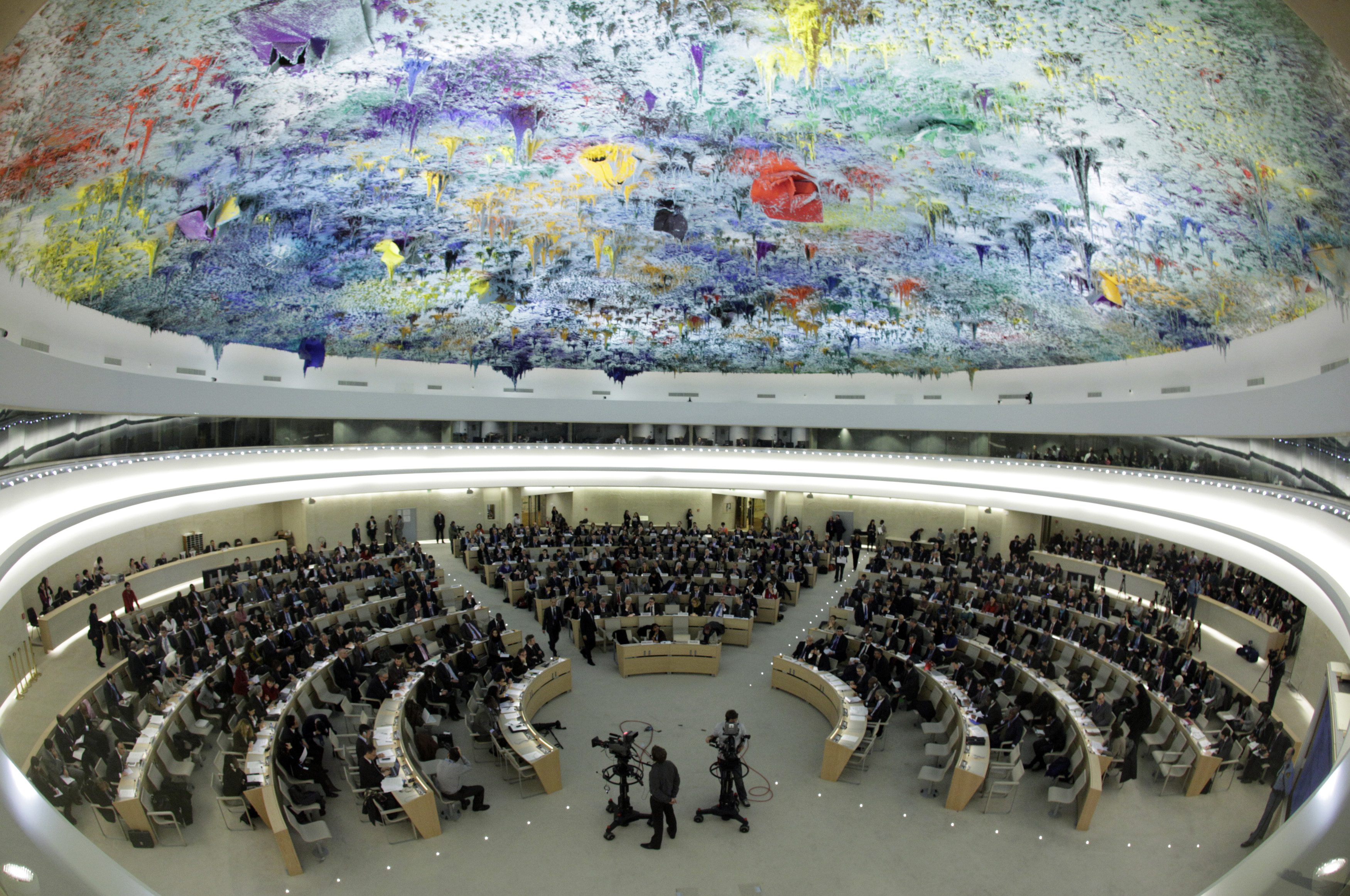

R2P and Holistic Approaches to Peace and Peace Processes
Remarks delivered by Ms. Savita Pawnday, Executive Director of the Global Centre for the Responsibility to Protect on 11 November 2021 at the dialogue between the Group of Friends of the Responsibility to Protect in Geneva, the International Commission on Inclusive Peace and the Principles for Peace Initiative, co-hosted by the Permanent Mission of Luxembourg, Interpeace and the Global Centre.
Excellencies, Ladies and Gentlemen,
Let me begin by thanking our co-hosts, the Permanent Mission of Luxembourg and Interpeace. Today is the first time that I am addressing the Group of Friends of R2P in Geneva as the new Executive Director of the Global Centre for the Responsibility to Protect, so it is a particular pleasure to be here.
The meeting today is an excellent opportunity to understand the linkages between conflict prevention, peace processes, atrocity prevention and R2P. It is indeed important that the International Commission on Inclusive Peace is briefing the Group of Friends of R2P and the atrocity prevention community in Geneva. I believe that their work in spearheading innovative approaches to peace and peace processes will be helpful in expanding our understanding of how we can prevent atrocities and their recurrence.
The current models of peace processes adopted by the international community lack a holistic perspective. In most cases they remain a negotiation between political elites, focus narrowly on political objectives or the cessation of hostilities. Oftentimes they are divorced from the reality on the ground, as was the case in Rwanda, where the peace process itself and the signing of the Arusha Accords was the triggering factor/event that ultimately led to the perpetration of the genocide against the Tutsis.
My next two points will further clarify why we need innovative approaches to peace to prevent atrocities:
- Traditional peace processes do not address structural risk factors for atrocities: issues like marginalization, communal and ethnic tensions, systematic patterns of human rights violations, or resource scarcity
In the Central Sahel, climate change has resulted in resource scarcity and has exacerbated conflict, the spread of violent extremism, ethnic tensions and the commission of atrocities. Any approach to tackle and address the situation requires a holistic view of the structural factors at play, including an understanding of the cross-border dynamics, needs of local communities and the challenges they are facing because of environmental degradation. The crisis in the Central Sahel is not going to be resolved by signing a peace accord in Bamako, Niamey or Ouagadougou.
The reason that Kenya is often touted as a success story – as Kofi Annan called “R2P in action” – was because mediation efforts not only focused on the short-term goal of stopping the violence, but also addressed long- term structural issues that subsequently led to constitutional and legislative changes.
- Traditional peace and conflict resolution agendas focus too heavily on the political elite and the politics at the national level thereby ignoring local and community level dynamics
The Commission on Human Rights in South Sudan warned in March 2021 that “while the Revitalized Peace Agreement from 2018 has led to a lull in hostilities at a national level, this has had little or no impact at the localized level,” as 75 percent of the country is currently experiencing brutal violence. The Commission asserted that the current levels of localized violence and commission of atrocities may be higher than during the country’s 2013-2018 civil war. While there exists a history of seasonal inter-communal violence in parts of South Sudan, what we are currently witnessing is the long-term impact of protracted conflict, proliferation of small arms and light weapons, weak state institutions and lack of trust in the justice system that has fractured the country and its communities. In addition to a national peace process, the people of South Sudan need localized peace dialogues and processes led by community leaders, including a transitional justice process.
In the Central African Republic (CAR), the 2019 peace agreement was equally hailed as an opportunity to bring an end to the country’s armed conflict. Yet, in September this year, the UN High Commissioner for Human Rights expressed her concern over the “significant deterioration of the human rights situation” in CAR; from February to June this year alone, her office documented a 76 percent increase in human rights violations and abuses, including killings, while the number of documented victims increased by 88 percent as compared to the same period in 2020.
Both South Sudan and CAR serve as dramatic examples of how peace agreements signed in presidential palaces or adorned conference halls do not necessarily translate to protecting a country’s population from violence, atrocities and systematic human rights violations.
So where do we go from here?
I will use this platform to urge the Commissioners and Principle for Peace Initiative to very consciously include an atrocity prevention and R2P perspective in devising the principles that will guide future mediators and agents of peace. The “atrocity prevention lens” in peace processes can alert those engaging in these processes about factors that could trigger atrocities and/or exacerbate existing fault lines. Guarantees of non-recurrence of atrocities can only be achieved through holistic peace that addresses structural grievances.
Thank you.
Related Content

